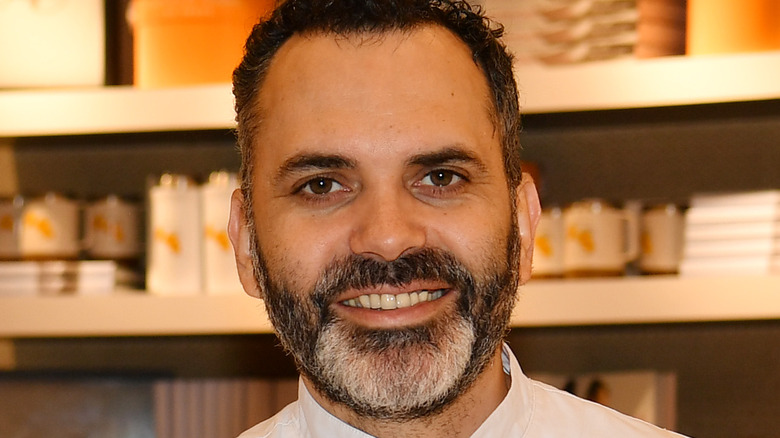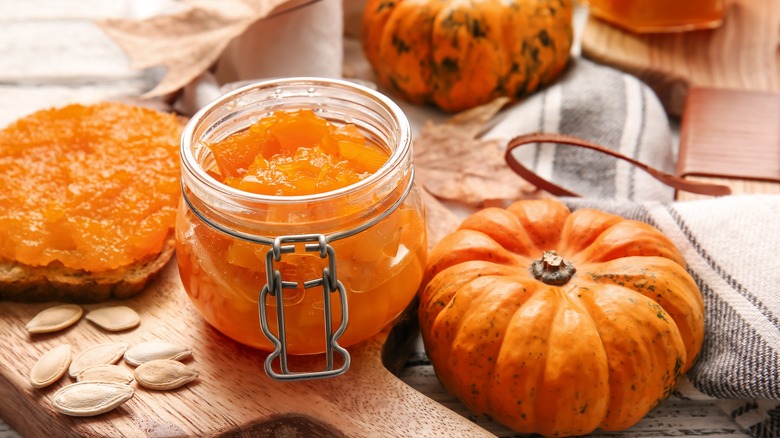The Precise Method Dominique Ansel Uses For Smooth Pumpkin Puree
When autumn comes around, it's the perfect opportunity for bakers to ditch the store-bought cans of pumpkin purée for a homemade version. After all, those cans of pumpkin are more likely just an amalgam of miscellaneous squash rather than the real version. Similar to preparing a silky custard, homemade pumpkin purée should be as smooth as possible, making it easy to incorporate into fillings and batters.
For a bit of purée wisdom, we turned to a piece of advice given to the Evening Standard from pastry guru, Dominique Ansel. Since very silky pumpkin purée is required for his classic pumpkin pie, Ansel's homemade batch requires a triple sieve straining, making it as velvety as possible. In addition to that, he uses only one kind of squash for the job — the famed sugar pumpkin. He explained this is a crucial step as it has a sweeter taste and smoother texture than other varieties.
Picking the best pumpkin for the job
To make your own batch of Ansel-inspired pumpkin purée, begin by locating a batch of sugar pumpkins. As opposed to the field varieties you'd select for jack-o-lanterns, sugar pumpkins are often small and round, with a deep orange hue. Grocery stores will have them with other gourds and squash meant for eating, rather than the giant field pumpkin bins you'll find in October. The difference in texture and taste of these two varieties is vast, with one promising a sweet and smooth flesh and the other merely grown for size.
Once you've got your hands on some sugar pumpkin, you'll halve it, remove the seeds, and roast it at 350 degrees Fahrenheit for about an hour. After it cools down a bit, you'll scoop the flesh from its skin and begin the straining process. A sieve or ricer will work well here, but a proper heavy-duty food mill would be even better. You'll go through this staining process at least three times so that any stringy impurities are removed. The result? A silky purée fit for a Dominique Ansel pumpkin pie.

